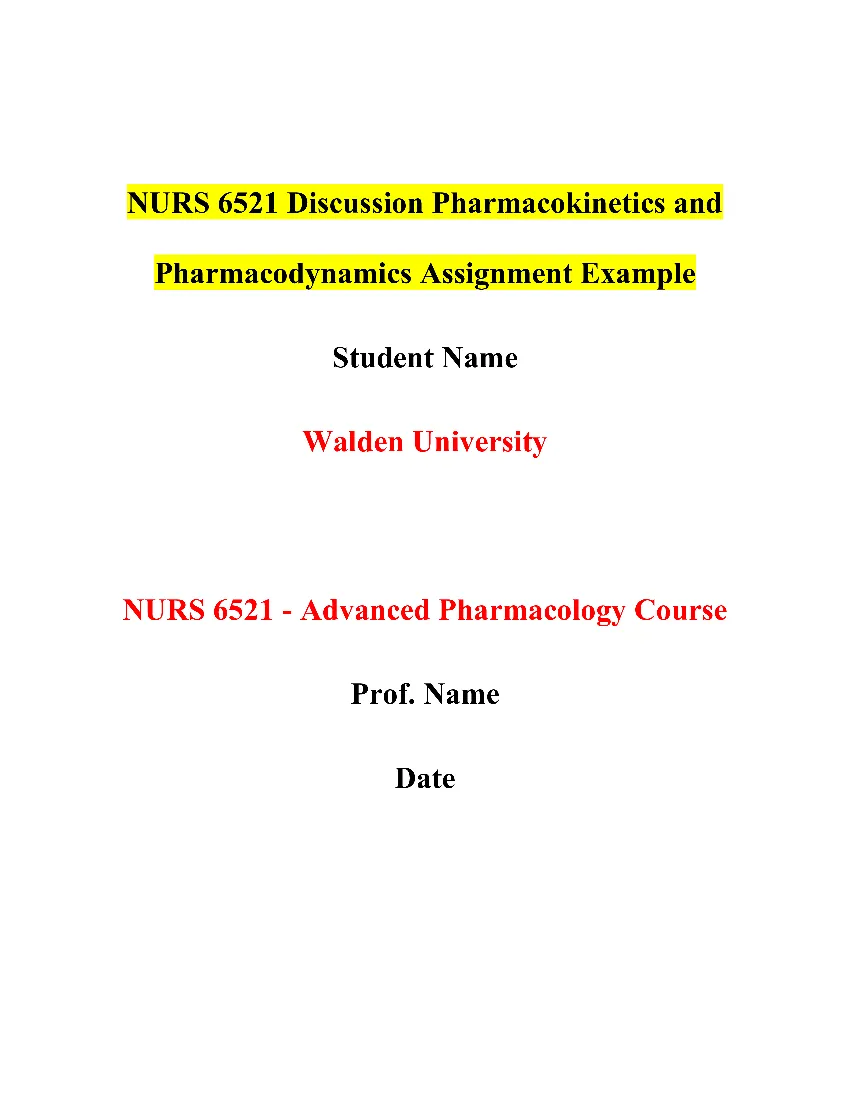Comparative Analysis Paper of the Healthcare System in the United States
 Assignment Brief: Comparative Analysis Paper of the Healthcare System in the United States
Assignment Brief: Comparative Analysis Paper of the Healthcare System in the United States
Assignment Title: Comparative Analysis Paper of the Healthcare System in the United States
Assignment Overview:
This assignment requires a comprehensive comparative analysis of the United States healthcare system, focusing on key aspects such as the impact of the Affordable Care Act (ACA), population health indicators in comparison to other developed nations, economic considerations, current issues, sustainability, and health disparities. The goal is to provide an in-depth examination of the healthcare landscape, assessing changes brought about by policy reforms, analyzing healthcare outcomes, and addressing current challenges within the U.S. healthcare system.
Understanding Assignment Objectives:
The Student’s Role:
- As the student, your role is to critically analyze the major drivers of policy in the U.S. healthcare system, specifically examining the transformative impact of the Affordable Care Act (ACA).
- Conduct a detailed comparison of healthcare outcomes before and after the ACA, emphasizing improvements or challenges in access, quality, and cost.
- Explore and compare population health indicators with other developed nations, focusing on chronic disease outcomes, hospital-related care, life expectancy, and mortality rates.
- Delve into the economic aspects of U.S. healthcare, comparing gross domestic product (GDP) as it relates to healthcare spending, healthcare expenditure per capita, spending priorities, and cost-sharing.
- Choose one current issue related to the sustainability of the healthcare system and explore its implications. Options include the impact of the removal of the tax penalty for the individual mandate, birth rate trends, immigration status, hospital mergers, or the influence of climate change on maternal and newborn health.
- Summarize current data on health disparities within the U.S. healthcare system, identifying causes and exploring the relationship between holistic admissions/affirmative action and the reduction of health disparities in health science programs.
Assignment Length and Structure:
- The paper should be approximately 7-8 pages in length (excluding title and reference pages).
- Organize the paper with APA-formatted headings, maintaining consistency with the provided rubric order.
- Include a formal introduction and conclusion, avoiding the use of the first person.
- Ensure a minimum of 5 peer-reviewed references, evidence from formal inquiries, and current data to support your analysis.
- Utilize relevant statistics and numerical data throughout the paper to substantiate your findings.
Key Focus Areas:
- The Affordable Care Act: Analyze the ACA’s impact on healthcare outcomes, emphasizing changes in access, quality, and cost.
- Population Health: Compare and contrast U.S. population health indicators with those of other developed nations, examining chronic disease outcomes, hospital-related care, life expectancy, and mortality rates.
- Economics of Healthcare: Explore and compare the economic dimensions of healthcare in the U.S. with other developed nations, considering GDP, healthcare expenditure per capita, spending priorities, and cost-sharing.
- Current Issues and Sustainability: Select and discuss one current issue related to the sustainability of the U.S. healthcare system, delving into its implications.
- Health Disparities: Summarize current data on health disparities within the U.S. healthcare system, exploring causes and the relationship between holistic admissions/affirmative action and the reduction of health disparities in health science programs.
Original Assignment Instructions: Comparative Analysis Paper
Although there isn’t a single reason, in general, comparison allows us to identify the areas for improvement in our own system. As you have learned in the module, resources available for healthcare, human and monetary, are limited so spending on the areas that stand to produce the most impact is critical to reducing spending, improving outcomes, and long-term sustainability. Similar to the way your unit, office, or organization may benchmark its outcomes against national outcomes or those of comparable institutions to determine future courses of action, country-to-country comparisons allow us to do the same for several key indicators of our healthcare system.
The staff nurse is the hub of the interprofessional unit that cares for a client; the DNP graduate is the hub of the intersection between practice, research, and policy and should be prepared to critically analyze the major drivers of policy (American Association of Colleges of Nursing, 2006).
Step 1: The Affordable Care Act. Briefly compare current U.S. healthcare outcomes to the years prior to the enactment of the Affordable Care Act. What has improved, stayed the same, or worsened? Access, quality, and cost can provide you with a framework for this section.
Step 2: Population Health. Compare and contrast the following measures of population health in the U.S. to comparable developed nations. You may choose a single country or multiple countries to complete this.
- chronic disease outcomes
- hospital-related care or patient safety outcomes
- life expectancy
- mortality rate
In addition to the above numerical figures, summarize current statistics on how COVID-19 has impacted the overall life expectancy for U.S. citizens based on their race.
Step 3: Economics. Compare and contrast the economics of healthcare in the U.S to comparable developed nations. Include a comparison of the following:
- gross domestic product as it relates to healthcare spending
- healthcare expenditure per capita
- spending priorities
- cost sharing
Step 4: Current Issues and Sustainability. Choose and discuss ONE (1) of the following related to current issues in and the sustainability of our current system:
- Explain the relationship between the participation of healthy persons in the insurance system and insurance costs. How has removal of the tax penalty for the individual mandate affected (a) premium rates and (b) uninsured rates?
- Summarize up-to-date information on U.S. birth rate trends and the growth of the senior population. What is the significance of the birth rate to the cost and sustainability of Medicaid/Medicare. How has the pandemic further impacted this sustainability?
- Explain the relationship between immigration status, healthcare utilization, and health outcomes among this group of people. Discuss the implications of providing basic healthcare services to non-legal immigrants.
- How have hospital mergers and the creation of healthcare conglomerates impacted healthcare cost and access to care in rural populations? Discuss concerns that Federal Trade Commission antitrust enforcement will not be enough to regulate healthcare prices.
- Explain how climate change impacts maternal and newborn health outcomes. To what degree do hospitals contribute to carbon gas emissions? What changes in hospital operations may help organizations achieve carbon neutrality?
Step 5: Health Disparities. Summarize current data on health disparities and inequities in our system. Identify some of the causes of health disparities, and explain how they lead to poorer outcomes. Lastly, explain the relationship between holistic admissions and/or affirmative action in health science programs (eg, nursing, medicine) and the ability to reduce health disparities.
Additional Notes:
- The paper should be approximately 7-8 pages in length (excluding title and reference pages).
- This is a formal paper and should include and introduction and a conclusion and avoid the use of first person.
- The paper should be organized with APA-formatted headings that are consistent with rubric order.
- Peer-reviewed references, evidence (results of formal inquiry published in the literature), and current data are your primary types of support and are necessary to develop posts as expected. There should be a minimum of 5 references included as support for your work.
- Relevant statistics and numerical data are expected to support your work throughout.
Submission Instructions: The paper should be submitted as either a Word document or a PDF to the designated space. Your work will automatically be submitted to turnitin.com upon submission to the course.
Comparative Analysis Paper of the Healthcare System in the United States Example
Introduction
The Patient Protection and Affordable Care Act (ACA), a landmark piece of legislation enacted in 2010, stands as a watershed moment in the evolution of the United States healthcare system. Acknowledging the inherent complexities and challenges plaguing the existing healthcare framework, the ACA embarked on an ambitious endeavor to reshape the landscape by fostering innovation, enhancing medical care delivery, and critically addressing the deeply entrenched disparities that had come to define the system. This comprehensive reform sought to expand access to healthcare and make it more affordable, particularly for those historically marginalized or underserved.
Health disparities, as elucidated by Kyere and Fukui (2022), represent the inequities between social groups that manifest in disparate healthcare insurance coverage, limited access to quality care, and missed opportunities for optimal health outcomes. The ACA, in its design and implementation, aimed to bridge these gaps and ensure that every individual, regardless of their socioeconomic status, gender identity, or other defining characteristics, could access quality healthcare.
Healthcare professionals play a critical role in the intricate web of healthcare delivery. This underscores the imperative for nursing professionals, particularly those with a Doctor of Nursing Practice (DNP) background, to critically analyze the major drivers of healthcare policy (American Association of Colleges of Nursing, 2006).
This paper embarks on a comparative journey, dissecting the impact of the ACA on U.S. healthcare outcomes, delving into population health measures in comparison to other developed nations, scrutinizing the economic intricacies of healthcare expenditures, and exploring current issues and sustainability within the evolving healthcare landscape. Additionally, we examine persistent health disparities and the role of affirmative actions in fostering inclusivity within health science programs.
The Affordable Care Act
Before the enactment of the Patient Protection and Affordable Care Act (ACA) in 2010, the U.S. healthcare landscape grappled with a myriad of challenges that undermined the fundamental principles of equity, accessibility, and affordability. Insurers, employing medical underwriting, often excluded individuals from coverage based on their health status, perpetuating disparities in access to essential healthcare services. Discriminatory practices created barriers for those with pre-existing conditions, leaving many without the vital protection of health insurance.
The ACA emerged as a comprehensive response to these systemic issues, ushering in a new era of healthcare policy. One of its hallmark achievements was the expansion of Medicaid, which significantly broadened healthcare access for lower-income residents. By extending coverage to adults with incomes up to 138% of the federal poverty level, the ACA ensured that millions who were previously excluded could now access quality and affordable care (Kyere & Fukui, 2022).
Crucially, the ACA eradicated the practice of insurers denying coverage or charging exorbitant premiums based on pre-existing conditions. This pivotal change marked a seismic shift in the landscape of healthcare equity. No longer could individuals be unfairly penalized for their health history, fostering a more inclusive and accessible healthcare environment (Fry-Bowers, 2021).
The expansion of Medicaid under the ACA had tangible and lifesaving effects. Between 2013 and 2017, regions that embraced Medicaid expansion witnessed approximately 19,300 fewer deaths among older adults, underscoring the transformative impact of policy decisions on real-world health outcomes (Kyere & Fukui, 2022).
Furthermore, the ACA tackled gender-based disparities in healthcare access. Prior to its implementation, women often faced obstacles to affordable and comprehensive healthcare, with pregnancy even considered a pre-existing condition. The ACA dismantled such discriminatory practices, ensuring that women were no longer charged higher premiums based on their gender and that essential services related to women’s health, such as contraceptive services, were made accessible to millions (Chakrabarti et al., 2020).
Population Health
Comparing the healthcare outcomes between the United States and Canada provides a robust understanding of the impact of healthcare systems on the well-being of their populations. Canada, with its universal health coverage, has consistently demonstrated superior health outcomes compared to the United States. Analyzing various facets of population health, including chronic disease outcomes, hospital-related care, life expectancy, and mortality rates, sheds light on the divergent paths these two nations have taken in shaping the health of their citizens.
Chronic Disease Outcomes
Chronic diseases represent a significant burden on healthcare systems globally, impacting the quality of life and contributing to substantial healthcare costs. In comparing the United States and Canada, the latter exhibits a noteworthy advantage in chronic disease outcomes. O’Connor and Graham (2019) highlight that Canadians experience nearly 36% better medical care outcomes for chronic conditions compared to their American counterparts. This divergence can be attributed to the comprehensive and equitable healthcare access facilitated by Canada’s universal health coverage.
Hospital-Related Care and Patient Safety Outcomes
The comparison of patient safety outcomes and hospital-related care further accentuates the disparities between the U.S. and Canadian healthcare systems. Research by Upadhyay and Opoku-Agyeman (2020) reveals that patients in the United States experience higher adjusted mortality rates within 30 days of hospitalization than their Canadian counterparts. The Canadian healthcare system’s equitable distribution of health resources contributes to improved patient safety outcomes, reinforcing the importance of addressing systemic inequities in healthcare delivery.
Life Expectancy
Life expectancy serves as a poignant indicator of a nation’s overall health and well-being. In this regard, Canada outpaces the United States, with its residents enjoying longer lives. O’Connor and Graham (2019) note that while males in the United States live an average of around 75 years, their Canadian counterparts boast a life expectancy of more than 78 years. Similarly, females in the United States, with an average life expectancy of 80 years, fall short of their Canadian counterparts who live, on average, up to 83 years. These disparities underscore the intricate interplay between healthcare delivery systems and the overall longevity of a nation’s population.
Mortality Rate
Analyzing mortality rates provides a deeper insight into the health challenges faced by these two nations. In 2020, the mortality rate in Canada stood at nearly 7.8 deaths per 1,000 people (Riley et al., 2020). Notably, Canada experienced relatively consistent mortality rates among children and young adults. In contrast, the United States witnessed a significant increase in its age-adjusted death rate, highlighting the disparities in health outcomes. Additionally, the infant mortality rate in the United States decreased but remained higher than in Canada, emphasizing persistent challenges in maternal and infant healthcare (Upadhyay & Opoku-Agyeman, 2020).
Impact of COVID-19 on Life Expectancy
The COVID-19 pandemic further underscores the disparities in health outcomes, particularly in the United States. Riley et al. (2020) highlight the disproportionate impact of the pandemic on racial and ethnic populations, leading to a decline in overall life expectancy. Latinos and Black residents experienced more significant reductions in life expectancy compared to their White counterparts, reflecting the existing inequalities in access to healthcare resources and the broader social determinants of health.
The Economics of Healthcare
A comprehensive examination of healthcare economics provides a nuanced perspective on the financial structures underpinning the delivery of medical services in the United States and allows for a comparative analysis with other developed nations, particularly focusing on Canada. The economic dimensions of healthcare encompass gross domestic product (GDP) as it relates to healthcare spending, healthcare expenditure per capita, spending priorities, and cost-sharing mechanisms. This exploration illuminates the financial intricacies that contribute to the divergent healthcare landscapes between these two nations.
Gross Domestic Product and Healthcare Spending
The nexus between a nation’s GDP and healthcare spending serves as a key indicator of its financial commitment to the well-being of its citizens. In the United States, healthcare expenditure significantly outstrips that of Canada relative to their GDP. Chakrabarti et al. (2020) note that in 2019, the U.S. spent a staggering $13,590 per person, constituting approximately 16.8% of its GDP, on healthcare. In contrast, Canada, while still a significant spender in the Organisation for Economic Co-operation and Development (OECD), allocated $6,666 per person, accounting for 10.8% of its GDP (Dongarwar et al., 2021).
This stark contrast underscores the higher prioritization of healthcare spending in the United States, translating into a substantial financial commitment that, while aiming to enhance healthcare quality, also raises questions about the efficiency and sustainability of such spending. The economic burden of healthcare, as a percentage of GDP, signals potential challenges in long-term fiscal sustainability and warrants a closer examination of the factors contributing to these expenditure patterns.
Healthcare Expenditure Per Capita
The per capita expenditure on healthcare provides a granular view of the financial resources allocated to each individual’s health needs. In 2020, the United States spent approximately $10,000 more per person on healthcare compared to Canada (Centers for Disease Control, 2022). While the Canadian Institute for Health Information (2019) reports that medical care costs around $7,000 per person in Canada, the U.S. exceeds $10,000 per person, reflecting a substantial financial disparity in healthcare spending.
This financial contrast prompts critical questions about the efficiency and outcomes associated with such disparate spending. The Canadian model, funded through taxes, places a heavier emphasis on equitable access to care without the burden of high out-of-pocket costs. In contrast, the U.S. model, relying on co-pays and premiums, exposes individuals to potentially unpredictable and prohibitive expenses. Analyzing these spending patterns unveils the complex interplay between economic considerations, healthcare delivery models, and the resulting impact on population health.
Spending Priorities and Cost-Sharing Mechanisms
Understanding spending priorities within healthcare systems sheds light on where financial resources are directed and reflects a nation’s values and policy goals. In the United States, the high spending priority on healthcare is evident in both public and private sectors. The intricate web of private insurance, government programs, and out-of-pocket expenses underscores a complex and multifaceted approach to financing healthcare. This multi-tiered system, while affording certain degrees of choice, also introduces disparities in access and affordability.
Conversely, Canada’s spending priorities are embedded in a universal healthcare model. Dongarwar et al. (2021) highlight that Canada, despite being one of the highest spenders among OECD nations, operates within a framework that promotes equitable access and social solidarity. The cost-sharing mechanisms in Canada involve shared costs between provinces and the federal government, providing a different approach to financial responsibility and healthcare delivery.
Current Issues and Sustainability
The landscape of healthcare in the United States is continually evolving, shaped by both internal policy decisions and external factors such as pandemics and demographic shifts. Examining current issues and the sustainability of the healthcare system offers insights into the challenges and opportunities that define the present and future trajectory of healthcare delivery.
Impact of Individual Mandate Changes
One pertinent issue is the relationship between the participation of healthy individuals in the insurance system and its subsequent effects on insurance costs. The removal of the tax penalty for the individual mandate, a key provision of the Affordable Care Act, has ramifications for both premium rates and the uninsured rates in the U.S. healthcare system. The individual mandate aimed to incentivize individuals, particularly the healthy demographic, to enroll in health insurance, thus mitigating adverse selection and stabilizing premium rates.
With the removal of the tax penalty, concerns arise regarding the potential increase in uninsured rates as healthy individuals may opt out of insurance coverage without facing financial consequences. This shift can lead to a concentration of individuals with higher healthcare needs in the insurance pool, driving up premium rates for those who remain insured. Analyzing the impact of these changes on the affordability and accessibility of insurance is crucial for sustaining a balanced and effective insurance market.
Birth Rate Trends and Aging Population
The United States is experiencing significant shifts in demographic trends, with implications for the sustainability of Medicaid and Medicare. The birth rate has seen fluctuations, with a decline in the overall number of births, particularly among younger age groups. Kuryliak (2022) notes that while fertility rates among females aged 20-24 have decreased, those in the 35-39 age group have increased substantially. This shift poses challenges for the cost and sustainability of Medicaid, which plays a vital role in covering a substantial portion of childbirth-related expenses.
Simultaneously, the aging population is expanding, driven by the baby boomer generation reaching retirement age. Riley et al. (2020) project a significant increase in the number of older adults in the U.S. by 2060. This demographic shift places strains on Medicare, the healthcare program designed for seniors. Planning for the healthcare needs of an aging population, including long-term care and chronic disease management, becomes imperative for the sustainability of these programs.
Impact of the COVID-19 Pandemic
The COVID-19 pandemic has introduced unprecedented challenges to the U.S. healthcare system, exposing vulnerabilities and testing its resilience. Millions of individuals lost access to employer-sponsored insurance during the pandemic, exacerbating the issue of uninsured rates in the country. The economic fallout led to job losses, making it difficult for many to maintain insurance coverage, further underscoring the interconnectedness of employment and health insurance.
The pandemic has also highlighted the importance of preparedness and the need for a robust public health infrastructure. Ensuring sustainable healthcare practices in the face of future pandemics requires strategic investments in preventive measures, healthcare workforce resilience, and a flexible system capable of adapting to rapidly changing circumstances.
Health Disparities
Health disparities, defined as differences in health outcomes and access to healthcare among various social groups, persist as a complex and deeply rooted challenge within the United States healthcare system. Examining the causes, consequences, and potential avenues for addressing these disparities is essential for fostering a more equitable and inclusive healthcare environment.
Causes of Health Disparities
Health disparities arise from a myriad of interconnected factors that extend beyond traditional healthcare access issues. Poverty, a significant determinant of health, plays a pivotal role in creating disparities. Kyere and Fukui (2022) emphasize that socially disadvantaged populations, often characterized by lower socioeconomic status, face barriers to healthcare insurance coverage, limited access to quality care, and reduced opportunities for achieving optimal health outcomes.
Beyond socioeconomic factors, health disparities manifest across various dimensions, including race, ethnicity, citizenship status, sexual orientation, and disability status. Discrimination and bias further exacerbate these disparities, creating systemic barriers that hinder marginalized groups from receiving equitable healthcare services. For example, LGBTQ individuals, racial and ethnic minorities, and immigrants often encounter unique challenges related to social stigma, discrimination, and cultural competency in healthcare settings.
Impacts on Health Outcomes
The consequences of health disparities are far-reaching, leading to poorer health outcomes among socially disadvantaged populations. Ibrahim et al. (2021) note that individuals facing disparities due to factors such as citizenship status, sexual orientation, or disability status experience higher health risks and encounter obstacles in accessing necessary healthcare services. Chronic conditions, preventable diseases, and mental health issues are often more prevalent among these populations, contributing to a cycle of poor health and limited access to appropriate care.
Racial and ethnic minorities, particularly Black and Latino populations, bear a disproportionate burden of health disparities. Riley et al. (2020) highlight the ethnic and racial inequalities exacerbated by the COVID-19 pandemic, leading to disparities in life expectancy. Black and Latino communities experienced a more significant decline in life expectancy compared to their White counterparts, underscoring the intersectionality of health disparities and systemic inequalities.
LGBTQ Experiences and Healthcare Disparities
The LGBTQ community faces unique healthcare challenges, with experiences of discrimination and marginalization contributing to health disparities. Kyere and Fukui (2022) point out that LGBTQ individuals are disproportionately exposed to environmental factors and conditions that increase health risks. Discrimination and stigma in healthcare settings can result in delayed or inadequate access to essential services, leading to adverse health outcomes.
Affirmative actions, such as policies promoting LGBTQ inclusivity and awareness in healthcare settings, play a crucial role in mitigating disparities. Fry-Bowers (2021) emphasizes that creating a healthcare environment that prioritizes inclusivity and actively addresses the unique healthcare needs of LGBTQ individuals is fundamental to reducing health disparities within this community.
Holistic Admissions and Affirmative Action
An important aspect of addressing health disparities involves examining the admission practices in health science programs, such as nursing and medicine. Holistic admissions and affirmative action play a role in increasing the representation of individuals from historically marginalized groups in healthcare professions. By prioritizing diversity in admissions, educational institutions contribute to building a healthcare workforce that reflects the demographic diversity of the population it serves.
Holistic admissions take into account not only academic achievements but also personal experiences, qualities, and attributes that contribute to a more comprehensive understanding of an applicant. Affirmative action, as a policy, seeks to actively address historical and structural inequalities by providing opportunities for individuals from underrepresented backgrounds.
Conclusion
In conclusion, the ACA has been a pivotal force in transforming the U.S. healthcare system, reducing disparities, and improving access. Despite progress, challenges persist, particularly in population health indicators when compared internationally, notably with Canada. Economic analyses reveal disparities in healthcare spending, prompting reflections on sustainability. Current issues, demographic shifts, and pandemic realities underscore the need for strategic planning and resilience. Addressing health disparities remains paramount, requiring a commitment to dismantling systemic barriers. Looking ahead, a vision of inclusivity and sustainability emerges, advocating for a healthcare system that reflects diversity, actively addresses disparities, and prioritizes preventive measures for the well-being of all citizens.
Elevate Your Grades with Expert Nursing Paper Assistance from ReliablePapers.com
Embarking on a nursing essay that seems insurmountable? Look no further! At ReliablePapers.com, we take pride in being your go-to destination for top-notch nursing paper writing services. Our expert nursing essay writers are dedicated to ensuring you not only meet your deadlines but also excel in your academic pursuits.
Navigating through complex topics or facing tight deadlines can be overwhelming. That’s where our professional essay writers come in – to relieve your academic stress and guide you to success. If the sample provided in the [Comparative Analysis Paper of the Healthcare System in the United States] doesn’t quite meet your needs, trust our writers to craft a unique, customized nursing essay that guarantees exceptional grades.
Why choose us? Our online nursing papers are not only of the highest quality but also incredibly affordable. We understand the financial constraints of college students, and our pricing reflects our commitment to making professional assistance accessible to all.
Whether you’re dealing with a complex topic on the nursing phenomenon of interest, facing a tight deadline, or seeking specific instructions, our pro writers have got you covered.
Take the first step towards academic excellence—seek the help of professional nursing essay writers at ReliablePapers.com.
Hire an Expert Paper Writer on Any Subject, Any Topic, Any Deadline! Submit your paper instructions by placing your order here to get started!

 Assignment Brief: NU 607 Endocrinology Discussion – Pituitary Gland
Assignment Brief: NU 607 Endocrinology Discussion – Pituitary Gland

 NU 607 Nursing Phenomenon of Interest (POI) Assignment Brief
NU 607 Nursing Phenomenon of Interest (POI) Assignment Brief Assignment Brief: NU 607 Nursing Concept Analysis Paper on Phenomenon of Interest
Assignment Brief: NU 607 Nursing Concept Analysis Paper on Phenomenon of Interest Assignment Brief: NU 607 Concept Map of Praxis Framework Nursing
Assignment Brief: NU 607 Concept Map of Praxis Framework Nursing Assignment Brief: Comparative Analysis Paper of the Healthcare System in the United States
Assignment Brief: Comparative Analysis Paper of the Healthcare System in the United States In the world of academic writing, creating an outstanding essay goes beyond just finding good research and making strong points. It’s about using words in a smart and clear way. Imagine it like a puzzle – and the most important piece of that puzzle is grammar.
In the world of academic writing, creating an outstanding essay goes beyond just finding good research and making strong points. It’s about using words in a smart and clear way. Imagine it like a puzzle – and the most important piece of that puzzle is grammar. Assignment Brief: Evidence-Based Practice PICO Question Development for Postpartum
Assignment Brief: Evidence-Based Practice PICO Question Development for Postpartum Homework, at times, may seem like a formidable mountain to climb, but its significance in your educational journey cannot be overstated. However, for those wrestling with the grips of depression, the very idea of approaching assignments can feel like an insurmountable challenge. In such times, understanding how to do homework when depressed becomes not just helpful but crucial.
Homework, at times, may seem like a formidable mountain to climb, but its significance in your educational journey cannot be overstated. However, for those wrestling with the grips of depression, the very idea of approaching assignments can feel like an insurmountable challenge. In such times, understanding how to do homework when depressed becomes not just helpful but crucial.
 NURS 6521 Discussion Pharmacokinetics and Pharmacodynamics Assignment
NURS 6521 Discussion Pharmacokinetics and Pharmacodynamics Assignment